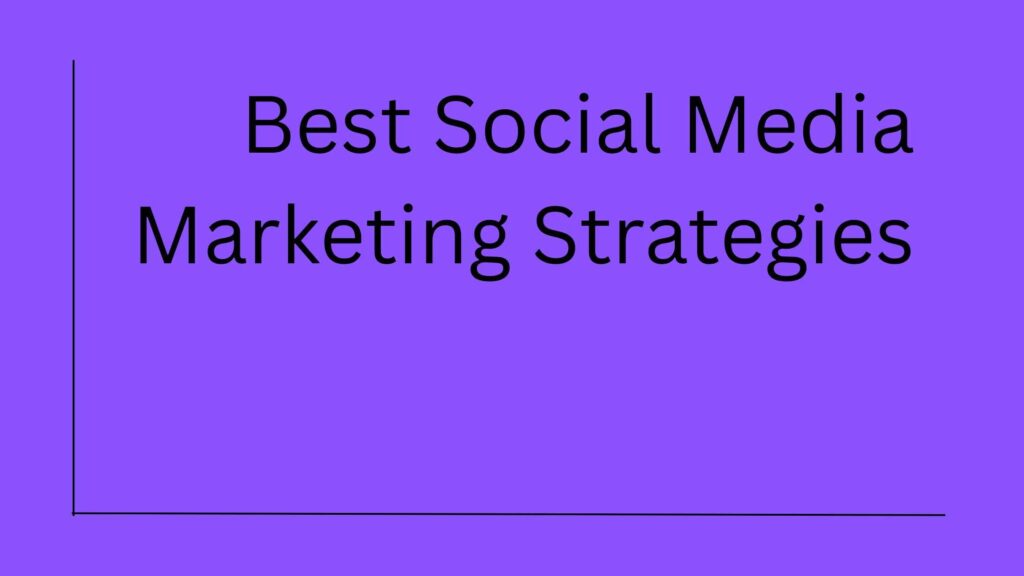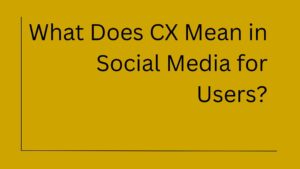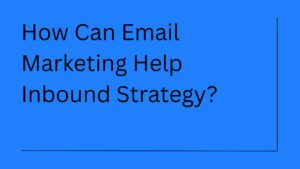Social media has completely changed how businesses connect with their customers. What started as a place for people to share photos and catch up with friends has turned into one of the most powerful marketing tools available today.
The thing is, most businesses know they need to be on social media. But knowing you need to be there and actually using it effectively are two very different things.
You can’t just post random content and hope something sticks. Social media marketing requires strategy, consistency, and understanding what actually works. The landscape keeps changing too; algorithms shift, new platforms emerge, and what worked last year might not work today.
But here’s the good news: certain social media strategies have proven themselves over time across different platforms and industries. These aren’t quick tricks or gimmicks. They’re solid approaches that consistently deliver results when done right.
Whether you’re running a small local business or managing marketing for a larger company, these ten strategies can help you get better results from your social media efforts. Some might seem obvious, but you’d be surprised how many businesses still get the basics wrong.
What are Some Effective Social Media Marketing Strategies?
1. Build Your Presence Across Multiple Platforms
Putting all your eggs in one basket rarely works out well in social media marketing.
Sure, Facebook might still be massive with billions of users worldwide. But your audience isn’t just hanging out in one place anymore. They’re on Instagram watching Reels, scrolling through TikTok, networking on LinkedIn, and maybe even catching up on Twitter (or X, or whatever it’s called this week).
Different platforms attract different demographics and serve different purposes. Your potential customers on LinkedIn are probably in a different mindset than when they’re browsing Instagram during their lunch break.
The key is finding where your specific audience spends their time. A B2B software company will probably get better results from LinkedIn than TikTok. A fashion brand targeting younger consumers? Instagram and TikTok are probably non-negotiable.
But here’s the catch: being on multiple platforms doesn’t mean spreading yourself so thin that you can’t maintain quality anywhere. Start with two or three platforms where your audience actually is, and do those well before expanding further.
2. Customize Content for Each Social Platform
This might be the biggest mistake businesses make with social media. They create one piece of content and blast it across every platform they’re on.
Same image, same caption, same everything. Facebook, Instagram, Twitter, and LinkedIn have identical posts everywhere.
The problem?
Each platform has its own culture, format preferences, and user expectations. What performs well on LinkedIn often flops on Instagram. A Twitter thread works completely differently from a Facebook post.
LinkedIn users expect professional insights and industry knowledge. Instagram is visual-first and more casual. TikTok demands authenticity and creativity. Twitter favors quick, punchy commentary.
Your audience notices when you’re just copying and pasting content everywhere. It feels lazy, and it doesn’t work nearly as well as content specifically designed for each platform.
This doesn’t mean you need to create entirely different content from scratch for every platform. You can adapt and repurpose the same core message or idea. But the presentation, tone, and format should fit the platform you’re using.
A detailed case study might work great as a LinkedIn article, transform into an Instagram carousel, and become a Twitter thread highlighting the key takeaways.
3. Focus on Strategic Storytelling Over Selling
Nobody opens Instagram thinking, “You know what, I really hope some brands try to sell me stuff today.” That’s just not why people use social media.
They’re there to be entertained, informed, inspired, or connected with others. They want stories, not sales pitches.
The businesses that do well on social media understand this fundamental truth. They focus on telling compelling stories that happen to feature their products, rather than just listing features and pushing for sales.
Show how your product fits into people’s lives. Share customer success stories. Give behind-the-scenes glimpses of your business. Talk about the problem you’re solving and why it matters.
Nike doesn’t just post pictures of shoes with prices. They tell stories about athletes overcoming obstacles. Patagonia shares environmental activism content that aligns with its brand values. These stories build emotional connections that eventually lead to sales.
The hard sell can come later, maybe in your email marketing or on your website. But on social media, lead with value and storytelling first.
4. Prioritize Visual Content
Video content has absolutely exploded across social media platforms. Short-form video, especially Reels, TikToks, and YouTube Shorts, dominates engagement metrics pretty much everywhere.
The numbers don’t lie. Posts with images get significantly more engagement than text-only posts. Videos perform even better. This isn’t really surprising when you think about it; humans are visual creatures, and scrolling through social media is often a passive activity.
You don’t need expensive production equipment or a professional film crew. Smartphone cameras are incredibly good now, and authentic, less-polished content often performs better than overly produced material anyway.
Mix up your visual content types:
- Product photos and demonstrations
- Behind-the-scenes footage
- User-generated content from customers
- Educational infographics
- Quick tutorial videos
- Team member spotlights
The key is consistency and quality. Grainy, poorly lit photos won’t do you any favors. But you also don’t need perfection; authenticity often beats polish on social media.
5. Run Contests and Giveaways
People love free stuff. This is perhaps the most reliable truth in marketing.
Contests and giveaways are one of the fastest ways to boost engagement, grow your following, and increase brand awareness. When structured well, they can generate massive amounts of exposure for relatively little cost.
The mechanics are usually straightforward: follow your account, like the post, tag friends, share to stories, whatever actions you want to encourage. Each action increases your reach as participants spread your content to their networks.
But here’s where many businesses go wrong: they give away something generic like an iPad or gift card that attracts prize-seekers rather than potential customers. You end up with a bunch of new followers who unfollow once the contest ends and never had any interest in your actual business.
Give away your own products or services, or prizes closely related to your niche. This attracts people who are genuinely interested in what you offer. Quality over quantity when it comes to contest participants.
Also make sure you understand each platform’s rules about contests and promotions. They all have specific guidelines you need to follow.
6. Share Educational and Valuable Content
Here’s something that might surprise you: people don’t follow business accounts just to see promotional content. They follow because they expect to get something valuable in return for their attention.
Educational content consistently outperforms pure promotional content across most industries. When you teach your audience something useful, you position yourself as an expert while building trust.
This could mean:
- How-to guides related to your industry
- Tips and tricks for using your products
- Industry insights and trends
- Common mistakes to avoid
- Answers to frequently asked questions
A fitness equipment company might share workout routines and nutrition tips. A software company could post productivity hacks and tech tutorials. A bakery might share baking tips and recipe ideas.
The content doesn’t always have to directly relate to selling your products. It just needs to be valuable to your target audience. When you consistently provide value, people pay attention when you do make an offer.
7. Offer Exclusive Deals and Freebies
Social media followers should feel like they’re getting something special that others don’t. Exclusive deals, early access, and freebies create that sense of being part of an inner circle.
This strategy works on multiple levels. It rewards existing followers for their loyalty, gives potential customers a reason to follow you, and creates urgency around your offers.
Flash sales are announced only on social media. Discount codes exclusively for Instagram followers. Early product launches for your community. Free downloads or samples for engaged audience members.
These don’t need to be massive discounts that kill your profit margins. Even small perks make people feel valued and increase the likelihood they’ll make a purchase.
The key word here is “exclusive,” though. If you’re running the same promotions everywhere, your social media audience won’t feel special. Give them deals and access they can’t get anywhere else.
8. Optimize for Mobile Users
Most social media usage happens on mobile devices. We’re talking about 80-90% or more, depending on the platform.
Yet plenty of businesses still create content clearly designed for desktop viewing. Images that don’t display properly on small screens. Videos with text too tiny to read on phones. Links that lead to websites not optimized for mobile.
Everything you post needs to work perfectly on mobile first, desktop second. Check how your content looks on an actual phone before posting. Make sure images are the right dimensions. Keep text large and readable. Test links on mobile browsers.
This extends beyond just the content itself. If you’re driving traffic to your website through social media, that website better provide an excellent mobile experience. Nothing kills conversions faster than making someone pinch and zoom their way through a desktop-only website on their phone.
Mobile isn’t the future of social media, it’s the present. Design everything with mobile users as your primary audience.
9. Respond to Every Comment and Message
Social media is supposed to be social. The “media” part often gets all the attention, but the “social” part is equally important, maybe more so.
When someone takes the time to comment on your post, ask a question, or send a message, they expect a response. Not eventually, not when you get around to it, they expect it reasonably quickly.
Research shows most social media users expect responses within a few hours at most. Some expect responses within an hour or less. That might seem demanding, but it’s the reality of customer expectations in the social media age.
Ignoring comments and messages signals that you don’t care about your audience. It makes people less likely to engage with your content in the future. And it means you’re missing opportunities to build relationships, address concerns, and turn interested people into customers.
Set up systems to monitor and respond to all engagement. Use social media management tools that consolidate messages and comments from multiple platforms. Assign specific team members to handle responses. Create response templates for common questions while personalizing them appropriately.
Even negative comments deserve responses. Especially negative comments, actually. How you handle criticism publicly shows everyone else how you treat customers.
10. Listen to Social Conversations
Most businesses talk at their audience through social media. The smart ones listen first.
Social listening means monitoring what people are saying about your brand, your competitors, your industry, and relevant topics. It’s about understanding the conversations already happening rather than just broadcasting your own messages.
What problems are your potential customers complaining about? What questions keep coming up? What do they love about your competitors? What do they hate? What trends are they excited about?
This information is incredibly valuable for shaping your marketing strategy, product development, and customer service. You can’t get these insights from traditional market research. People are more honest in casual social media conversations than they are in surveys.
Various tools can help with social listening, from free options like searching hashtags and keywords to paid platforms that provide detailed analytics. The specific tool matters less than actually paying attention to what you learn.
Join relevant groups and communities where your audience hangs out. Follow industry hashtags. Set up alerts for mentions of your brand. Read the comments on competitor posts.
Then use what you learn. Create content that addresses the questions people are asking. Adjust your messaging based on what resonates. Identify potential customers who are actively looking for solutions you provide.
How to Create a Social Media Strategy?
Having great tactics is one thing, but without a plan, your efforts can scatter. Here’s a step-by-step approach to creating a solid social media strategy:
- Set Clear Goals: Decide what you want to achieve (brand awareness, leads, sales).
- Identify Your Audience: Understand who they are and where they spend time online.
- Choose the Right Platforms: Focus on the channels that align with your audience.
- Plan Your Content: Create a mix of educational, entertaining, and promotional posts.
- Schedule Consistently: Use a calendar and scheduling tools to stay organized.
- Engage Actively: Respond to comments, join conversations, and encourage interaction.
- Track & Optimize: Review analytics monthly to see what’s working and what’s not.
Making Social Media Strategies Work for Your Business
Social media marketing isn’t rocket science, but creating a social media marketing strategy does require consistent effort and strategic thinking.
The strategies listed here work across most industries and business types, but you’ll need to adapt them to your specific situation. A local restaurant will implement these differently than a SaaS company or an online retailer.
Start by picking two or three strategies that seem most relevant and achievable for your current situation. Master those before moving on to others. Trying to do everything at once usually means doing nothing particularly well.
Track your results so you know what’s actually working. Each platform provides analytics showing which content performs best, when your audience is most active, and how engagement trends over time. Use this data to refine your approach.
Remember that social media is a long game. You won’t transform your business overnight with a few viral posts. But consistent, strategic effort compounds over time into meaningful results, more brand awareness, stronger customer relationships, and ultimately more sales.
The businesses winning at social media marketing aren’t necessarily doing anything revolutionary. They’re just doing the fundamentals consistently well while staying adaptable as platforms and user behaviors evolve.






1 thought on “10 Best Social Media Marketing Strategies That Work for Most”
Social media is a global thing; the best strategy that works for any business still needs to be researched and posted, but the formulation is the point; it is where people get stuck finding the sustainability strategy.